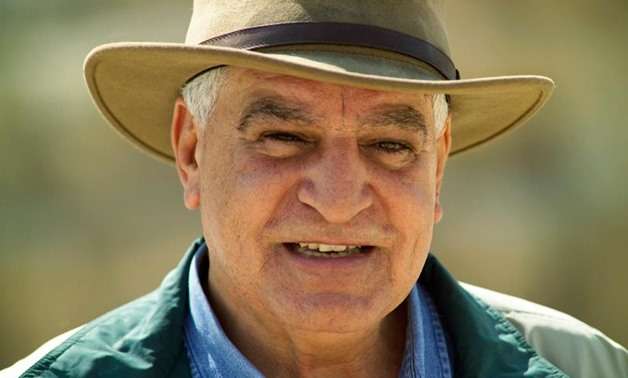Dr. Zahi Hawass
We used to read about architect, art, temples and temples of the Pharaohs. However, all these topics deal with death and the hereafter world.
But here I'll offer you cute topics left by the ancient Egyptian such as a papyrus known as the "comic papyrus" which depicts two animals playing checkers game.
This papyrus dates back some 3000 years of the epoch of Ramessides and is kept in the British Museum in London.
It also depicts animals perform movements of humans only so we see two bitter enemies playing the checkers which was one of the favorite games of the pharaohs and resembles the nowadays chess game.
The rules of the Pharaonic checkers were not known clearly so far despite the Egyptian artist depicts the two bitter enemies as a lion and an antelope that compete savagely.
The artist also shows details of the table that the enemies sit at and their chairs.
Scholars think the Egyptian artist abandons the usual rules as he did not like the scenes he draws on the walls of the graves of the tombs in which the husband appears sitting in front of his wife and playing checkers.
There is another scene dated back to the epoch of the Ramessides which depicts the procession of beasts and geese.
This scene is kept also in the British Museum and it is a part of the previous papyrus.
These comic parts include a familiar scene to the Pharaohs which shows a cat standing on its hind legs and behind it stands another animal that resembles a fox that bears a pack on its shoulder and holds a stick.
What is strange is that the lion appears in the front of the scene as walking on the hind legs and at the same time we see the cat holds a stick in its left front leg and makes the geese follow the first lion and we see a little goose.
This comic may indicate folklore or a legendary tale at the Pharaohs.
There is another comic that kept in Chicago University, USA.
That scene depicts two animals that hurt a boy and it is drawn in black and red colors on a thin piece of stone.
Another scene may indicate the vision of the artist to show the upturned-down of state of life in the country.
The artist depicts a boy kneeling on the ground and his hands up which resemble prisoners of war.
This boy may be a little noble and we see the cat who worked as a servant for the mouse but he disciplined the noble.
We know that the scenes on the walls of the tombs depict the owner of the cemetery, whether he was an official or a noble, as sitting on his chair while his servant disciplines one of the workers or peasants who work on his land.
This is one of the familiar scenes that we always see on the walls of tombs, and therefore it is believed that this scene was depicted in this way to be an illustration of a story written for children, where the animals perform the same stories that the human beings used to do.
Translated by Ahmed Moamar













